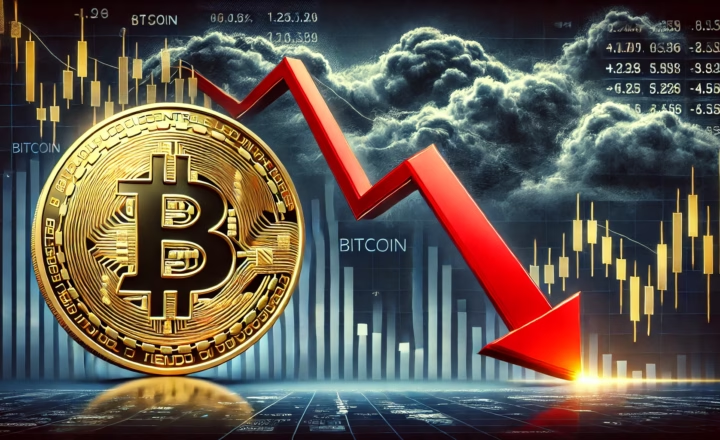Bitcoin Price Movements and Key Factors
Bitcoin has experienced significant price fluctuations today. Over the weekend, it briefly dropped to the $78,000 range, marking its lowest level in three months . However, a major announcement from the United States drastically shifted the trend. President Donald Trump stated that his administration would establish a national strategic reserve for cryptocurrencies, including Bitcoin, among the five selected assets . This statement triggered a rapid market reaction, with Bitcoin surging over 11%, reaching $94,164 by Sunday afternoon . The overall cryptocurrency market capitalization increased by over 10% ($300 billion), demonstrating the impact of the U.S. government’s policy shift .
Conversely, macroeconomic concerns tempered this bullish sentiment. The Trump administration’s announcement of a 25% tariff on Canadian and Mexican imports and a 10% tariff on Chinese goods raised concerns about global trade tensions, causing a broad risk-off sentiment . This led to Bitcoin facing selling pressure on Monday, temporarily dipping to the $91,000 range (a three-week low) . However, as of 10:00 AM Eastern Time, Bitcoin had rebounded to approximately $96,000, marking a 2.5% decline from the previous day . Today’s Bitcoin price action reflects the intersection of positive and negative factors emanating from the U.S.
Global Market Trends
Bitcoin’s price fluctuations are closely tied to broader global market movements. In the United States, market sentiment has been influenced by policy changes. While optimism over pro-crypto policies is growing, concerns over trade tariffs and inflation continue to weigh on risk assets . The announcement of new tariffs fueled inflation expectations, leading to a shift in monetary policy outlooks, potentially tightening liquidity and posing challenges for risk assets, including Bitcoin . This was evident as the Nasdaq index, which heavily features tech stocks, faced downward pressure, mirroring the headwinds for Bitcoin . The U.S. market remains highly volatile, with Bitcoin reflecting investors’ shifting risk appetite.
In contrast, European market trends diverged from those in the U.S. The Markets in Crypto-Assets (MiCA) regulation, set to take full effect by the end of 2024, has provided a clearer regulatory framework for institutional investors . Recent fund flow data indicates that while the U.S. has seen capital outflows from crypto investment products, Europe has experienced net inflows—Germany saw an inflow of $30.5 million, while Switzerland attracted $15.8 million . This suggests that institutional confidence in European crypto regulations remains strong, even amid bearish sentiment in the U.S. .
Emerging markets have also demonstrated resilience, particularly where economic instability and currency devaluation are prevalent. In Argentina, where economic uncertainty and peso devaluation continue, cryptocurrency adoption has surged, with approximately 5 million people actively using digital assets . Argentina remains one of the leading nations in crypto adoption, using Bitcoin and stablecoins as a hedge against economic turmoil . This illustrates that while global financial markets may impact Bitcoin’s price, demand remains strong in regions experiencing economic instability.
Investor Behavior: Institutional and Retail Trends
Institutional investors (whales) significantly influence Bitcoin’s market dynamics. Since the start of the year, capital inflows into cryptocurrency markets had been strong, driven by expectations of crypto-friendly policies following the U.S. presidential election. Over the past 18 weeks, $29 billion has been poured into the market. However, sentiment shifted in late February, with $924 million in net outflows over the past two weeks . Institutional investors have been taking profits due to concerns over trade policies and inflation, with Bitcoin-focused investment products seeing $571 million in outflows last week . Notably, some institutional players have increased short positions on Bitcoin, betting on further declines . However, interest in altcoins remains strong. XRP (Ripple’s token) has seen significant capital inflows, with $38.3 million entering the asset last week alone, contributing to a cumulative net inflow of $819 million since mid-November .
Retail investors, on the other hand, have turned more cautious. The Crypto Fear & Greed Index, a measure of market sentiment, has dropped to the 20s, marking the lowest level since July 2022 . This suggests that individual investors have grown increasingly risk-averse, reminiscent of the extreme fear levels seen during Bitcoin’s crash to $17,500 in June 2022 . Market activity, including trading volumes and social media discussions, indicates a shift toward a “wait-and-see” approach among retail investors. Despite the bearish sentiment, some investors view the current dip as a long-term buying opportunity. Analysts at Bernstein argue that while short-term risk remains due to macroeconomic concerns, Bitcoin’s long-term fundamentals remain intact .
Regulatory Developments and Market Impact
Regulatory shifts following the 2024 U.S. presidential election have significantly impacted the crypto industry. President Trump’s executive order on establishing a strategic cryptocurrency reserve has sparked optimism . Furthermore, the first-ever “Crypto Summit” at the White House in early February and the recent naming of five reserve cryptocurrencies (Bitcoin, Ethereum, XRP, Solana, and Cardano) have boosted market confidence . These moves indicate a policy shift toward proactive engagement with the crypto sector, potentially accelerating institutional adoption .
The regulatory environment has also softened. The SEC, previously known for its stringent stance, has withdrawn multiple investigations into crypto firms and dropped its lawsuit against Coinbase . Additionally, the legal battle with Ripple regarding XRP may soon be resolved, which has fueled institutional interest in the token . These regulatory changes signal an improving investment climate for digital assets.
In Europe, MiCA’s structured regulatory approach has created a favorable environment for institutional investors . The rule’s clarity has encouraged capital inflows into European crypto investment products. Meanwhile, in Asia, Singapore, Hong Kong, and Dubai have each implemented their own regulatory frameworks, providing legal certainty for crypto businesses. As regulatory frameworks become more structured worldwide, institutions will likely increase their participation in the crypto market.
Future Market Outlook
Despite Bitcoin’s volatility, most analysts foresee a recovery in the long term. Short-term movements will depend on macroeconomic factors. If inflation worsens or trade tensions escalate, Bitcoin could face further downside risks, potentially testing the $72,000–$74,000 range . However, many analysts believe Bitcoin will stabilize around $72,000–$80,000 before resuming its uptrend .
Structural trends such as the Bitcoin halving event in April 2024 and the expansion of institutional-grade investment products (such as Bitcoin spot ETFs) remain strong tailwinds for long-term growth. Historically, Bitcoin has entered bullish cycles following halvings, and the prospect of supply reduction could support further price appreciation. As one expert put it, “Bitcoin’s long-term value is driven by adoption and technological advancements, not short-term policy changes” .
In conclusion, while Bitcoin faces near-term headwinds, regulatory clarity, institutional adoption, and fundamental supply dynamics position the asset for long-term growth.










